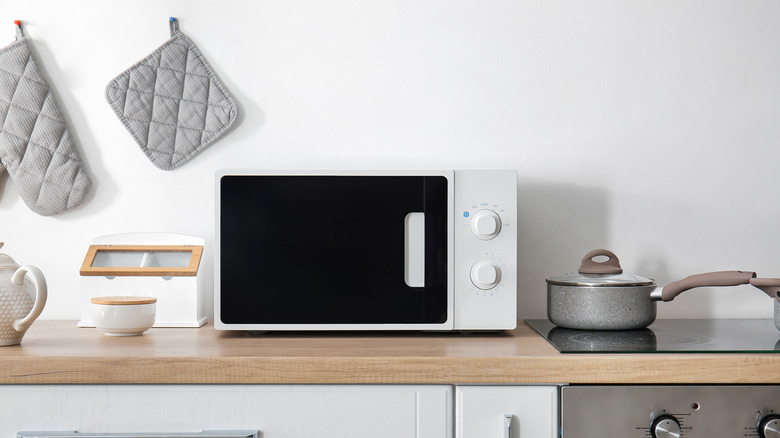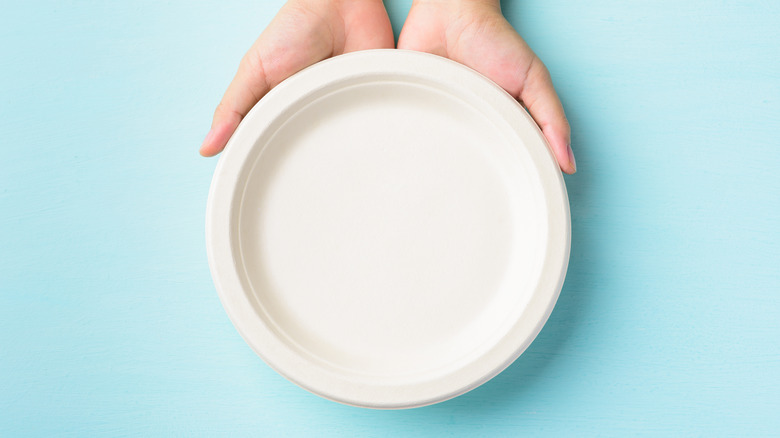Is It Dangerous To Microwave A Paper Plate?
Ahh, the good old paper plate. It's a weeknight lifesaver. A trusted friend. The personal butler you never asked for. Paper plates say, "Don't worry about tidying up tonight, sir. Go have a seat. I'll take care of everything." Sure, they might not be the world's most environmentally-sustainable dining option, but their convenience is as undeniable as it is legendary. So, to you, paper plates, we say "thank you." But, their trove of small wonders might end when it comes time to reheat.
You're a smart home cook. You would never put metal in the microwave. You know better... right? It turns out that the materials that make their way into your microwave can be sneakier than they might seem. Takeout boxes with little handles? Metal. When you microwave any frozen meal with an aluminum foil wrapper, that's metal too. Aside from the potential for burning your hand (since most metals are such quick conductors of heat), the real reason to avoid microwaving metal is that it can heavily damage your microwave, says Mental Floss. Metal doesn't absorb those electric waves that microwaves use to heat your food — it reflects them, and they bounce all around the inside of your microwave. But, it's a different story when it comes to paper. Is it dangerous to microwave a paper plate?
The short answer is: Probably not... but maybe
According to Brooklyn Craft Pizza, paper plates are made from compressed paper with one side coated in a thin wax layer, which is usually not toxic or hazardous. But, how can consumers know when it's okay and when to play it safe? Appliance giant Whirlpool says to check the packaging on your plates for a "microwave safe" label. Also, avoid reheating paper plates with a visible sheen, it says, as these are coated in plastic.
The USDA warns against ink transferal, too. Those paper plates with pretty designs might look enticing in the store, but if you're using them for reheating, steer clear and opt for the plain, unprinted ones instead. Be sure not to keep paper plates n the microwave for too long, either. Test YouTuber Hunting Waterfalls conducts an experiment in which a paper plate is heated in a microwave for five minutes, and (perhaps unsurprisingly) the plate catches on fire. So, keep your microwave intervals to one minute or less as you reheat those leftovers, carefully checking the temperature in between.
So, the next time you get lost in a film, and your movie night snack gets cold — or, if you simply don't want to dirty a plate just for a grilled cheese — take a second look at your paper plate before popping it in the microwave. The second glance is worth it to avoid the risks.

